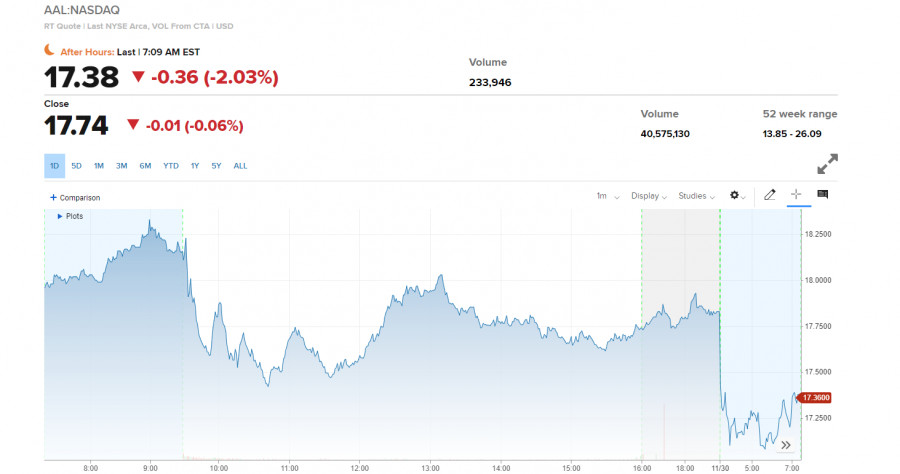Trading remains volatile on the US stock market due to concerns over the new Omicron strain, which could send indexes into the $4,584 - $4,660 range. On Tuesday, stock market futures slumped, overturning Monday's gains. The Dow Jones futures fell by 423 points or 1.2%, the S&P 500 futures declined by 1% and the Nasdaq 100 lost 0.5%.

The sell-off was triggered by FT's interview with Stephane Bansel, CEO of Moderna. Bansel said current vaccines are likely to be less effective against the new strain, and that vaccine effectiveness could significantly decline further if the virus begins to mutate. The CEO added it would take months to develop and ship the vaccine against the Omicron variant.
High uncertainty is likely to persist in the market until the end of the year. The Federal Reserve now faces an arduous task of explaining how they would fight high inflation, protect the labor market and taper QE simultaneously amid a new wave of the pandemic during the upcoming meeting on December 13-14.
Yesterday, the Fed's chairman Jerome Powell said Omicron poses a threat to the regulator's mandate to stabilize prices and ensure high employment. This situation is unnerving market players, which expected a more transparent Fed meeting in December.
The yield of 10-year US treasury bonds fell below 1.5% amid investor concern over the potential US economic slowdown due to the coronavirus.
Major indexes grew on Monday after US president Joe Biden stated new restrictions are not currently expected, including travel bans.
The new variant of COVID-19, first discovered in South Africa, is now registered in more than a dozen countries, resulting in new travel restrictions. On Friday, the World Health Organization labelled Omicron a matter of concern. Its Monday announcement, interpreted by market players as milder in tone, gave support to the markets.
Stocks of tourism companies are the most likely to slump during the new coronavirus wave, as many countries prepare for lockdown measures. Shares of several companies in the tourism sector has already begun to decline during the premarket on Tuesday, with Expedia Group losing 2.3%, Norwegian Cruise Line Holdings falling by 3.8% and American Airlines slumping by 3.3%.
Shares of several leading pharmaceutical companies were also hit. Moderna's stock lost 4.2% before recovering some of its loss. Shares of Regeneron fell by 3% on reports that antibody therapy could have lowered the effectiveness of the vaccine against the Omicron strain.
Pfizer was among the few companies on the upside, gaining 1.2%.
The new wave of COVID-19 has boosted investor demand for Netflix and Zoom stocks, which went up by 0.7% and 2.3% respectively during the premarket. 
On the technical side, the S&P 500's nosedive last week is not an overall crash, at least for now. Traders could push the index higher, if the COVID-19 situation puts less pressure on market players. The resistance level of $4,660 remains a target for bulls - despite their efforts, the index failed to reach it yesterday. If the S&P 500 consolidates at that level, a further growth towards the $4,718 area could be possible, leaving a chance for the index to push new all-time highs in the future. The upcoming Fed meeting in December would preserve bullish demand. If the index fails to break above $4,600, it could again fall towards $4,584 and break below it towards $4,551 and $4,512.
The material has been provided by InstaForex Company - www.instaforex.com